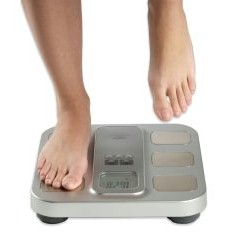It’s natural to want to weigh in frequently while you’re on a weight loss program. The feedback can keep you motivated when you succeed, and keep you on track by warning you that you’re starting to slip.
But weighing in the wrong way can have just the opposite effect, with your body’s natural rhythms giving you frustrating and inconsistent readings.
Weigh In Once Per Week
Your body weight will fluctuate from day to day by several pounds. If you weigh in daily, those fluctuations will give you an unrealistically low weight one day and a frustratingly high weight the next. Weighing in just once a week will avoid these short-term changes and keep track of the overall trend of your body weight.
Weigh In At the Same Time of Day
You can weigh up to half a pound lighter if you weigh in after using the restroom, or a pound or more higher if you weigh in after eating. When you set a specific time of day, you’ll weigh with approximately the same amount of “cargo” each time. It also helps you remember to weigh in week after week, becoming a sort of scheduled ritual.
Don’t Weigh in While Ill
Cold symptoms can make you retain water, while a stomach bug can make you jettison water weight. In either case, your weigh-in won’t be consistent with your regular body weight.
Similarly, water retention while premenstrual will give women an unrealistically high temporary body weight. It’s best to take the week off from your weigh-in, since these numbers will skew your results.
Always Use the Same Scale
Scales can vary by a surprising amount — especially the bathroom scales you and your friends might have at home. Using the same scale each time gets you a consistent reading. Even if your scale is off by a few pounds, the consistency will give you an accurate read of how much weight you lose from week to week.
Know Your “Fighting Weight”
Consider your weight as a range, rather than a specific number. The fluctuations that make daily weigh-ins ineffective also make it unrealistic to set a goal of a specific numerical weight. Instead, set your weigh-in to a five-to-10 pound spread. Once your weight is in that area, rest easy until you start pushing the top of your margin.
Although the most important part of any weight loss program is to pay faithful attention to your diet and activity, how you track your progress can have a strong effect on your success.
Also Read:

